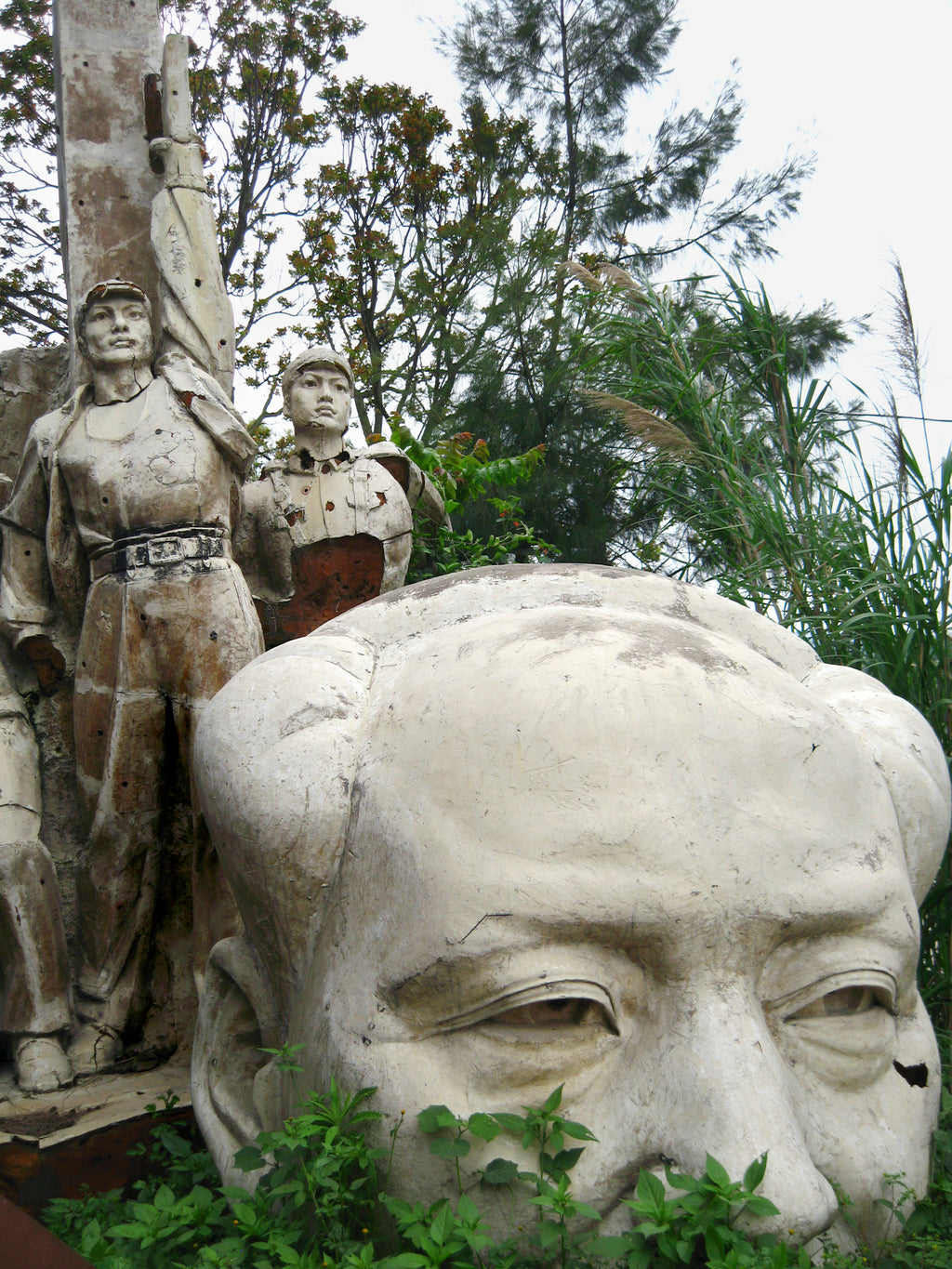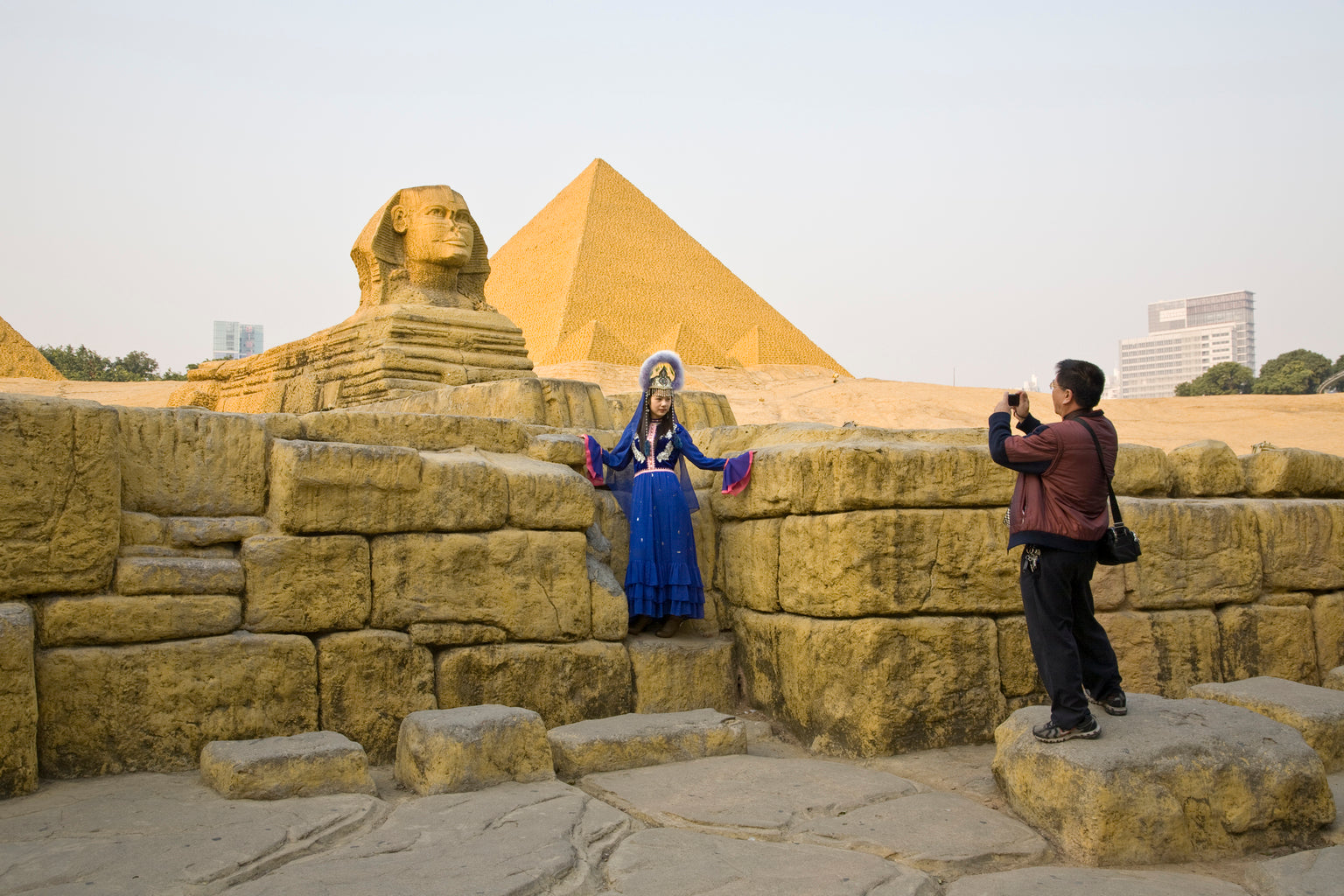IMPOSSIBLE IS NOTHING
ESSAY BY: ROB SCHMITZAccording to the official history of the People’s Republic of China, the Communist Party has pulled more than 700 million people out of poverty over the past 35 years. The unofficial truth behind this oft-repeated propaganda is that Chinese individuals have pulled themselves out of poverty. Impossible Is Nothing: China’s Theater of Consumerism poignantly captures the surreal realm these pioneers have transported themselves to: a land momentarily frozen between stoic countryside and frenetic metropolis.

Untitled #6 (The Road to Shantou) Chendian Town, Shantou 2010.
Briggs’s lens throughout this collection of photographs focuses not so much on the individuals who occupy these peculiar spaces as much as it does on the spaces themselves: streets surrounded by billboards selling lacy lingerie; near-empty shopping malls made of marble and escalators; replica Egyptian pyramids constructed as a setting for photographs that, once framed, often end up strategically placed inside luxury apartments to display status.

Swans Wedding Photo Studio,Jinjiang, Fujian Province 2013.

Red & Gold Grand Gateway Mall, Shanghai 2009.
The collection’s title refers to an Adidas slogan lifted from a quote by the late boxing legend Muhammad Ali. It appears in one of the photographs, a massive billboard from which women on the 2008 Chinese Olympic team are captured, one by one, in the heat of competition, intensity glowing in their eyes. Below, a woman strolls past, too busy pursuing her own aspirations to bother. “Impossible is Nothing” seems to float by in the background, forgotten, like so many big white Chinese characters of government propaganda posters.
Instead, its message is captured in the eyes of women photographed individually at a beach resort who have come not to swim, but to be photographed in a beautiful natural setting that is completely foreign to them and to the friends and family with whom they will share the images. Just as foreign are the looks on their faces: the numb, straight-faced expressions that have traditionally been the norm for such photographs are replaced by smiling, confident, almost defiant poses on the edge of nature’s most immense manifestation, as if the subjects had conquered the world’s largest force and now stand atop the remains.

Mannequins Wenzhou 2008.

Untitled #10 (Domestic) Xiamen 2013.
“Numb, straight-faced expressions that have traditionally been the norm for such photographs are replaced by smiling, confident, almost defiant poses on the edge of nature’s most immense manifestation, as if they had conquered the world’s largest force and now stand atop the remains.”
The spirit of the message is also revealed in the eyes of migrant workers at lingerie factories in the Pearl River Delta. Unlike so many images we’ve seen of downtrodden workers who make our consumables, the women in this collection look self-assured, confident, and focused on their work, as if they harbor no doubts that their hard work will someday enable them to afford—and wear—the lacy ensembles they now stitch together.

Untitled #30 (The Road to Shantou) Chendian Town, Shantou 2010.

Meeting Halfway Grandview Mall, Guangzhou 2009.
In 2013, Chinese leader Xi Jinping coined the phrase 中国梦—“the Chinese dream”—defining his country’s new guiding principle as a “rejuvenation” of the Chinese nation. The slogan, a supposed knock-off of the American Dream, was a curious choice for a leader known for condemning Western values (despite sending his only daughter to study at Harvard). It was also a very clever ideological strategy: China’s Communist Party had rebranded one of humanity’s most inspirational aspirations, infused it with Chinese characteristics, and spit it out to its 1.3 billion citizens
Soon after, propaganda posters began appearing throughout urban China, replete with poetry and images of ancient China evoking a return to a simpler, purer, society. Above the artwork, one could often find the characters 中国梦,我的梦: China’s dream, my dream. The order was intentional. The essence of Xi’s Chinese dream, says sinologist Geremie R. Barmé, is that “individuals can realize their individual dreams only if they also accept the common national goals derived by the Chinese Communist Party.” It was—and continues to be—a dream that aims to inspire the fastest-growing middle class in the world, reminding them to prioritize traditional Chinese values in their day-to-day lives.

Mao II Sculpture Fabrication Studio, Xiamen 2010.

Sphinx Window of the World, Shenzhen 2009.
The scenery surrounding China’s new consumer class in Briggs’s photos shows that the party has its work cut out for it. Chinese tourists gleefully pose in front of replicas of Florence, the Grand Canyon, and Giza; Chinese artists stand proudly in front of their oil-painting copies of Western masterpieces; and dozens of Santa dolls line the shelves of a cramped stall, surrounding a lonely vendor who uses her downtime to knit.
Wherever they look, Chinese consumers and workers in Briggs’s photos are surrounded by slick romanticized imagery of the West— environments of pure exotic aspiration. Mao himself is relegated to a ceramic figurine at an antiques shop or to a bust of a tired statue, the bottom half of his face obscured by weeds, as if the great helmsman and his ideals have been left to the natural elements that will gradually expose and decay them

Piazza San Marco Window of the World, Shenzhen 2009.

Jian Hua Sun Haicang, Xiamen 2013.
Yet, under closer examination, these new aspirational messages are often just as empty as the old ones. The propaganda posters of the 1960s that encouraged people to take up socialist values were just as hard a sell to those who were barely surviving Mao’s brutal political campaigns as lingerie and Swiss watches are to the hundreds of millions of Chinese who have barely entered the country’s new middle class.



